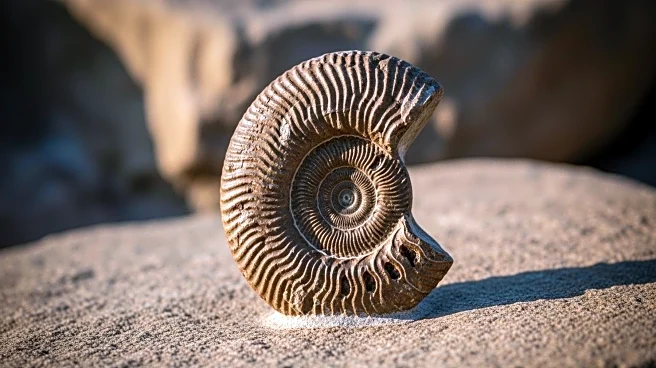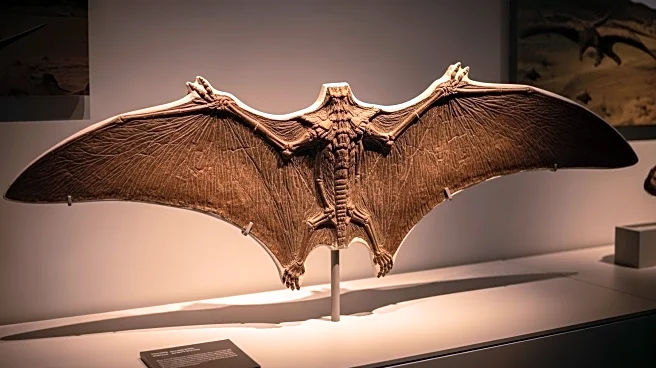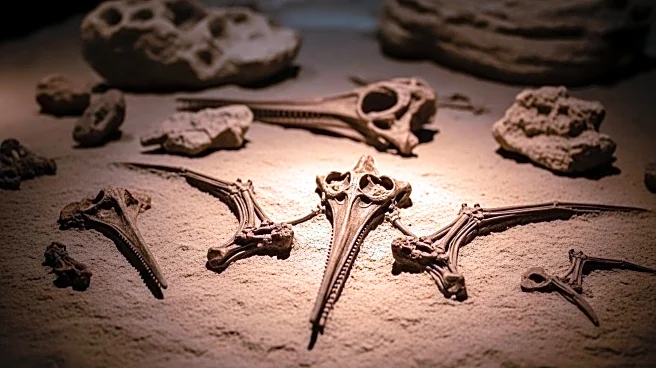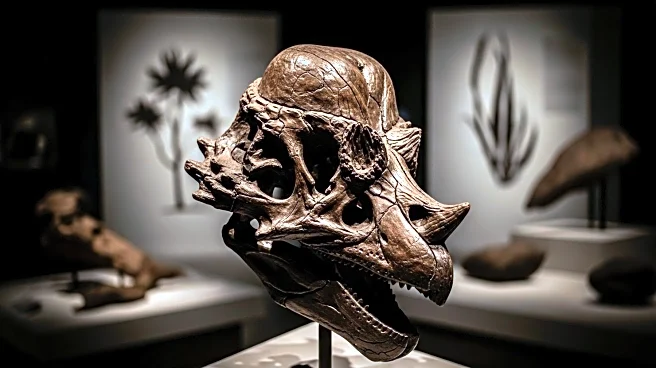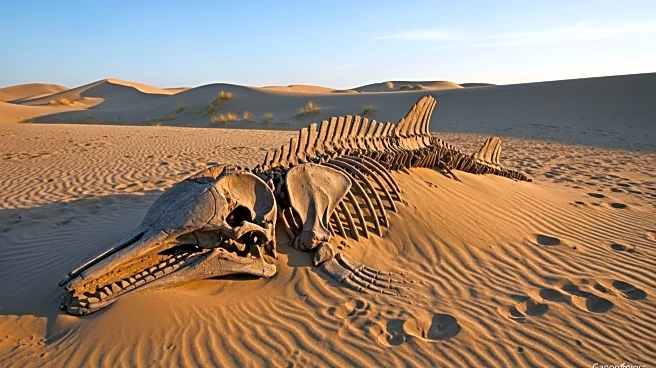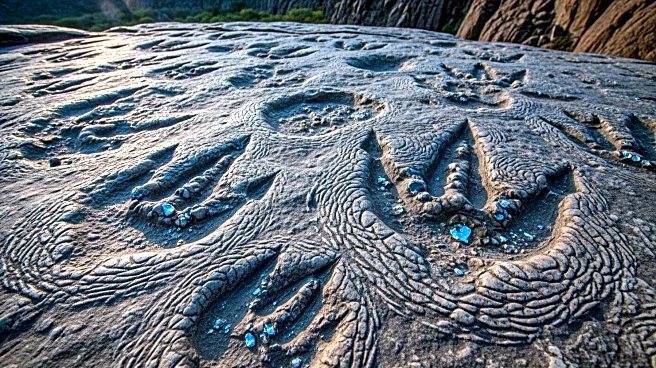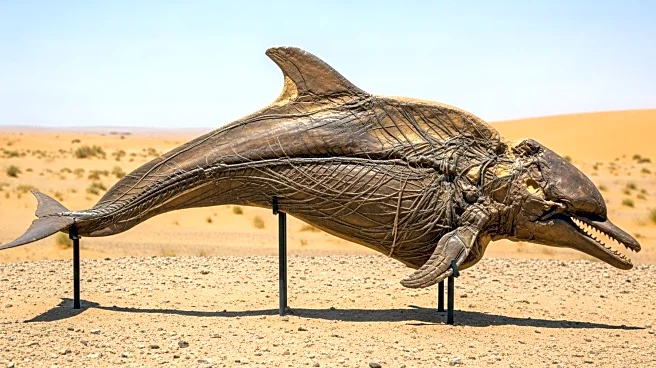What's Happening?
Paleontologists at the University of Bristol have identified a new species of dinosaur from Triassic fossil beds in South Wales, near Penarth. The fossil, initially reported over 125 years ago, was re-examined using modern digital scanning techniques. The specimen, known since 1899, was previously misidentified and has been on display at the National Museum of Wales. The fossil consists of natural molds of the jawbone, with the original bone having disappeared. Using photo scanning, a 3D digital reconstruction was created, allowing detailed study. The dinosaur, named Newtonsaurus cambrensis, is a large predatory theropod, with a jawbone suggesting a body length of 5-7 meters.
Why It's Important?
The identification of Newtonsaurus cambrensis highlights the significance of historical specimens in paleontology, which can yield new insights even after years in collections. This discovery underscores the importance of Wales in paleontological research, as Triassic beds are rare worldwide. The finding contributes to the understanding of dinosaur evolution and diversity during the Triassic period, offering new perspectives on the origins of major theropod divisions. It also demonstrates the value of modern technology in revisiting and accurately identifying historical fossils.
What's Next?
The re-description of Newtonsaurus cambrensis may prompt further exploration of Triassic beds in Wales, potentially leading to more discoveries. Researchers might continue to use digital scanning techniques to re-evaluate other historical specimens, enhancing the understanding of prehistoric life. The scientific community may engage in discussions regarding the implications of this discovery for the classification and evolutionary history of theropods.
Beyond the Headlines
This discovery raises questions about the accuracy of historical fossil identifications and the potential for modern technology to correct past errors. It also highlights the cultural and scientific heritage of Wales, emphasizing the region's contribution to global paleontological research. The ethical considerations of preserving and studying historical specimens may be explored, ensuring that such fossils are accessible for future research.


